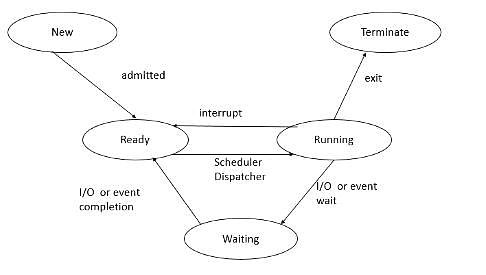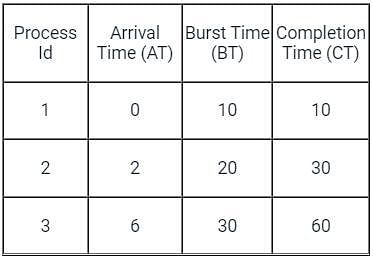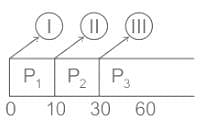Computer Science Engineering (CSE) Exam > Computer Science Engineering (CSE) Tests > Test: Processes - Computer Science Engineering (CSE) MCQ
Test: Processes - Computer Science Engineering (CSE) MCQ
Test Description
10 Questions MCQ Test - Test: Processes
Test: Processes for Computer Science Engineering (CSE) 2024 is part of Computer Science Engineering (CSE) preparation. The Test: Processes questions and answers have been prepared
according to the Computer Science Engineering (CSE) exam syllabus.The Test: Processes MCQs are made for Computer Science Engineering (CSE) 2024 Exam.
Find important definitions, questions, notes, meanings, examples, exercises, MCQs and online tests for Test: Processes below.
Solutions of Test: Processes questions in English are available as part of our course for Computer Science Engineering (CSE) & Test: Processes solutions in
Hindi for Computer Science Engineering (CSE) course.
Download more important topics, notes, lectures and mock test series for Computer Science Engineering (CSE) Exam by signing up for free. Attempt Test: Processes | 10 questions in 30 minutes | Mock test for Computer Science Engineering (CSE) preparation | Free important questions MCQ to study for Computer Science Engineering (CSE) Exam | Download free PDF with solutions
Test: Processes - Question 1
The systems which allow only one process execution at a time, are called __________
Detailed Solution for Test: Processes - Question 1
Detailed Solution for Test: Processes - Question 2
| 1 Crore+ students have signed up on EduRev. Have you? Download the App |
Detailed Solution for Test: Processes - Question 3
Detailed Solution for Test: Processes - Question 4
Test: Processes - Question 5
Which system call can be used by a parent process to determine the termination of child process?
Detailed Solution for Test: Processes - Question 5
Detailed Solution for Test: Processes - Question 6
Detailed Solution for Test: Processes - Question 7
Test: Processes - Question 8
The maximum number of processes that can be in Ready state for a computer system with n CPUs is:
Detailed Solution for Test: Processes - Question 8
Test: Processes - Question 9
Consider three CPU intensive processes, which require 10, 20, 30 units and arrive at times 0,2,6 respectively. How many context switches are needed if shortest remaining time first is implemented? Context switch at 0 is included but context switch at end is ignored
Detailed Solution for Test: Processes - Question 9
Test: Processes - Question 10
The kernel keeps track of the state of each executing program by using a data structure called ________.
Detailed Solution for Test: Processes - Question 10
Information about Test: Processes Page
In this test you can find the Exam questions for Test: Processes solved & explained in the simplest way possible.
Besides giving Questions and answers for Test: Processes, EduRev gives you an ample number of Online tests for practice
Download as PDF





















